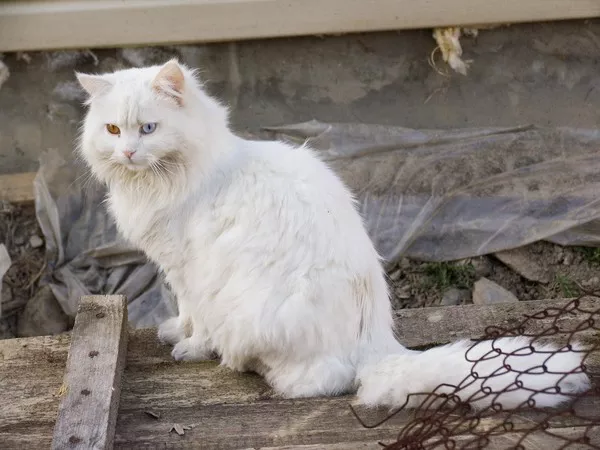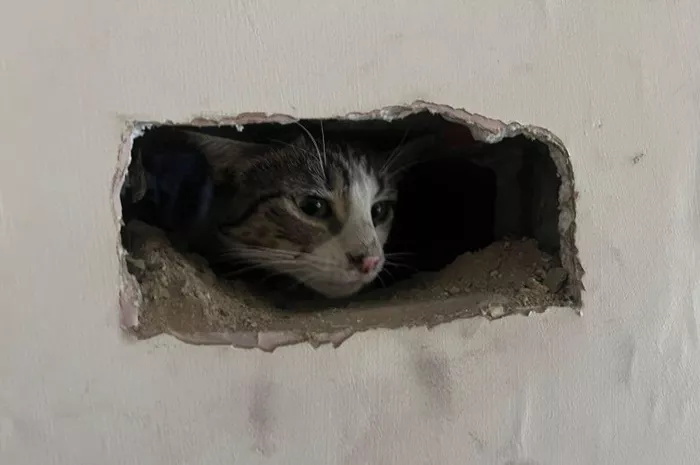Calico cats are renowned for their striking tricolor coats, a unique blend of white, black, and orange or red hues that make them a favorite among cat enthusiasts. Beyond their captivating appearance, calico cats, like all feline breeds, are subject to specific health concerns that potential owners should be aware of. This article delves into the various health problems that calico cats may encounter, providing detailed insights into each issue, their symptoms, and potential treatments.
Understanding Calico Cats
Before delving into the health issues, it’s essential to understand what makes calico cats unique. The term “calico” refers not to a breed, but to a color pattern. Most calico cats are female, a result of the genetic mechanism behind their distinctive coloration. Male calico cats are rare and usually have specific genetic conditions that result in their tricolor appearance.
Genetic Basis of Calico Coloration
The calico pattern is a result of X-linked genes, meaning the color traits are carried on the X chromosome. Female cats have two X chromosomes (XX), which allows them to express both black and orange coloration. Males, having only one X chromosome (XY), typically exhibit only one color. The rare male calico cat usually has an extra X chromosome (XXY), a condition known as Klinefelter syndrome, which can lead to several health issues.
While calico cats do not have specific health problems solely due to their coloration, certain conditions are more prevalent due to their genetic makeup, particularly in male calico cats.
1. Klinefelter Syndrome
Symptoms and Diagnosis
Male calico cats are often sterile and may exhibit physical anomalies such as small testicles and reduced secondary sexual characteristics. Klinefelter syndrome can also lead to behavioral changes and developmental delays. Veterinary diagnosis typically involves genetic testing and a thorough physical examination.
Health Implications
Klinefelter syndrome can result in an increased risk of diabetes, joint issues, and behavioral problems. Due to their unique genetic makeup, male calico cats may require specialized veterinary care to manage these conditions effectively.
Treatment and Management
There is no cure for Klinefelter syndrome, but symptoms can be managed through regular veterinary check-ups, a balanced diet, and appropriate medical interventions for associated conditions such as diabetes.
2. Obesity
Causes and Risk Factors
Obesity is a common issue in many domestic cats, including calicos. Factors contributing to obesity include a sedentary lifestyle, overfeeding, and a diet high in calories. Neutering can also lead to weight gain due to hormonal changes.
Health Consequences
Obesity can lead to a host of health problems, including diabetes, arthritis, heart disease, and decreased life expectancy. Overweight cats are also more prone to developing fatty liver disease (hepatic lipidosis), a potentially fatal condition.
Prevention and Management
Preventing obesity involves regular exercise, a balanced diet, and portion control. Owners should work with their veterinarians to develop a weight management plan that includes appropriate food types and quantities, as well as regular physical activity. Interactive toys and scheduled playtimes can help keep calico cats active and healthy.
3. Dental Disease
Prevalence and Symptoms
Dental disease is prevalent in cats, including calicos. Symptoms include bad breath, drooling, difficulty eating, and visible tartar buildup on the teeth. Gingivitis and periodontitis are common dental issues that can lead to more severe health problems if left untreated.
Health Implications
Untreated dental disease can result in tooth loss, oral pain, and systemic infections that may affect the kidneys, liver, and heart. Maintaining dental health is crucial for the overall well-being of calico cats.
Prevention and Treatment
Regular dental check-ups and cleanings by a veterinarian are essential. Owners should also brush their cat’s teeth regularly using pet-safe toothpaste and provide dental treats or toys designed to reduce plaque buildup. In cases of advanced dental disease, professional cleaning or tooth extraction may be necessary.
4. Feline Lower Urinary Tract Disease (FLUTD)
Symptoms and Diagnosis
FLUTD encompasses a range of conditions affecting the bladder and urethra. Symptoms include frequent urination, straining to urinate, blood in the urine, and urinating outside the litter box. Diagnosis typically involves a combination of urinalysis, blood tests, and imaging studies.
Risk Factors
Factors contributing to FLUTD include stress, obesity, diet, and genetic predisposition. Male cats are at a higher risk of developing urinary blockages, a severe and potentially life-threatening condition.
Treatment and Management
Treatment depends on the underlying cause and may include dietary changes, medications to manage pain and inflammation, and increased water intake. In severe cases, surgical intervention may be necessary. Preventative measures include feeding a high-quality diet, encouraging water consumption, and minimizing stress.
5. Heart Disease
Types and Symptoms
Heart disease is a significant health concern for all cats, including calicos. The most common type is hypertrophic cardiomyopathy (HCM), characterized by thickening of the heart muscle. Symptoms include lethargy, rapid breathing, coughing, and sudden collapse.
Diagnosis and Risk Factors
Diagnosis involves a thorough physical examination, chest X-rays, echocardiography, and electrocardiography. Risk factors include genetics, age, and obesity.
See Also: How Much Should a Male Burmese Cat Weigh: A Feeding Guide
Management and Treatment
While there is no cure for HCM, treatment focuses on managing symptoms and slowing disease progression. This may involve medications to reduce heart workload and prevent blood clots, as well as regular veterinary check-ups to monitor the condition.
6. Skin Problems
Types and Symptoms
Calico cats can suffer from various skin problems, including allergies, fungal infections, and parasitic infestations. Symptoms include itching, redness, hair loss, and the presence of sores or lesions.
Diagnosis and Risk Factors
Diagnosis typically involves a physical examination, skin scrapings, and allergy testing. Risk factors include environmental allergens, poor grooming habits, and exposure to other infected animals.
Treatment and Prevention
Treatment depends on the specific condition and may include topical or oral medications, dietary changes, and improved grooming practices. Regular flea and tick prevention is also crucial to avoid parasitic infestations.
7. Polycystic Kidney Disease (PKD)
Symptoms and Diagnosis
PKD is a genetic condition more common in certain breeds but can affect any cat. Symptoms include weight loss, increased thirst and urination, and lethargy. Diagnosis is confirmed through ultrasound imaging of the kidneys.
Health Implications
PKD leads to the development of fluid-filled cysts in the kidneys, which can impair kidney function and lead to chronic kidney disease. Early detection and management are crucial to slow disease progression.
Management and Treatment
There is no cure for PKD, but dietary management, fluid therapy, and medications can help manage symptoms and improve the quality of life. Regular monitoring by a veterinarian is essential to adjust treatment as the disease progresses.
8. Hyperthyroidism
Symptoms and Diagnosis
Hyperthyroidism is a common endocrine disorder in older cats, characterized by excessive production of thyroid hormones. Symptoms include weight loss, increased appetite, hyperactivity, and vomiting. Diagnosis involves blood tests to measure thyroid hormone levels.
Health Implications
Untreated hyperthyroidism can lead to serious complications such as heart disease, hypertension, and kidney damage. Early diagnosis and treatment are crucial for managing the condition effectively.
Treatment Options
Treatment options include medication to suppress thyroid hormone production, radioactive iodine therapy to destroy overactive thyroid tissue, and surgical removal of the thyroid gland. Each treatment has its pros and cons, and the best option depends on the individual cat’s health status and the owner’s preferences.
9. Diabetes Mellitus
Symptoms and Diagnosis
Diabetes mellitus is a metabolic disorder that can affect calico cats, particularly those that are overweight or older. Symptoms include excessive thirst and urination, weight loss despite increased appetite, and lethargy. Diagnosis is confirmed through blood and urine tests to measure glucose levels.
Health Implications
If left untreated, diabetes can lead to serious health issues, including ketoacidosis, neuropathy, and organ damage. Managing diabetes requires lifelong commitment and regular veterinary care.
Management and Treatment
Management includes insulin therapy, dietary changes to control blood sugar levels, and regular monitoring of glucose levels. Weight management and regular exercise are also important components of managing diabetes in cats.
10. Allergies
Types and Symptoms
Calico cats, like other cats, can suffer from various allergies, including food allergies, environmental allergies, and flea allergy dermatitis. Symptoms include itching, skin irritation, gastrointestinal issues, and respiratory problems.
Diagnosis and Risk Factors
Diagnosis involves identifying the allergen through elimination diets, allergy testing, and observing the cat’s response to potential allergens. Risk factors include exposure to common allergens like certain foods, pollen, and flea bites.
Treatment and Management
Treatment depends on the type of allergy and may include dietary changes, antihistamines, corticosteroids, and flea control measures. Reducing exposure to identified allergens is crucial in managing allergies effectively.
Conclusion
Calico cats are not predisposed to unique health problems solely because of their coat color. However, the genetic factors that contribute to their tricolor pattern, especially in rare male calicos, can lead to specific health issues. Understanding these potential problems, their symptoms, and management strategies is essential for ensuring the well-being of calico cats. Regular veterinary check-ups, a balanced diet, and attentive care can help mitigate many of these health concerns, allowing calico cats to lead healthy, happy lives.

























